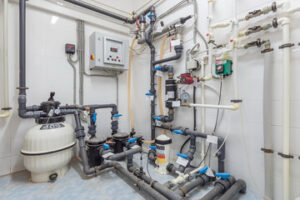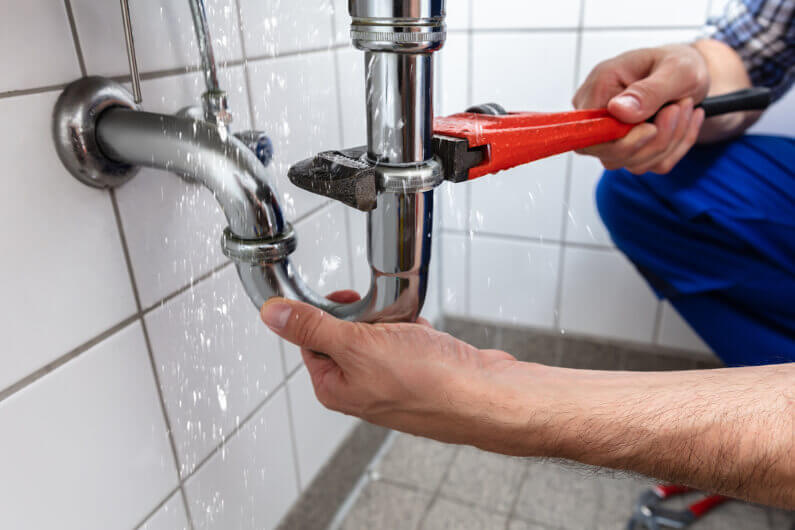Are you hunting for information around What to Know About Plumbing: Basics, Tips, and Insights?

Plumbing is a vital element of any type of home, in charge of providing tidy water for alcohol consumption, food preparation, and showering, in addition to eliminating wastewater securely. Comprehending the fundamentals of home plumbing is vital for every single property owner to make sure correct maintenance, troubleshooting, and, if needed, fixings. In this beginner's overview, we'll cover the essential ideas of home plumbing to assist you become a lot more accustomed to exactly how it works.
Water Furnace
The water heater is responsible for home heating water for domestic use, including bathing, food preparation, and cleansing. Typical kinds of hot water heater include tank-type hot water heater, tankless (on-demand) hot water heater, and heat pump water heaters. The hot water heater is attached to the water system system and supplies hot water to plumbing fixtures as required.
Water drainage System
The drainage system gets rid of wastewater from your home and brings it away to a sewage therapy center or septic system. It consists of a network of pipelines, installations, and components that transfer wastewater from plumbing components to the main sewer line or sewage-disposal tank. Proper drainage is essential to stop blockages, back-ups, and sewer leakages.
Ventilation System
The ventilation system helps keep correct atmospheric pressure and protect against sewer gases from entering your home. Vent pipelines, likewise known as air vent stacks, prolong from plumbing components to the roof, enabling sewer gases to leave securely outside. Air flow pipelines likewise allow air to enter the drain system, helping with smooth wastewater flow and avoiding suction or vacuum impacts.
Water System System
The water supply system brings tidy water into your home from a community water source or a personal well. It contains a major water line that attaches to your home's plumbing system, usually located underground. A water meter gauges the quantity of water eaten, while a shut-off shutoff allows you to manage the circulation of water into your home.
Plumbing Fixtures
Plumbing fixtures are tools that supply water to various parts of your home and consist of sinks, faucets, bathrooms, showers, bath tubs, and appliances such as dishwashing machines and cleaning equipments. Each fixture is linked to the water system system via pipes and fittings and may have its shut-off shutoff for maintenance or emergencies.
Common Plumbing Tools
Having the right tools available is crucial for performing basic plumbing repair work and maintenance tasks. Typical plumbing devices consist of flexible wrenches, monkey wrench, pliers, pipeline cutters, hacksaws, plungers, augers (or drainpipe snakes), and Teflon tape. Having these tools readily available can assist you take on minor plumbing problems effectively.
Standard Plumbing Repairs
While some plumbing repair work may call for professional support, numerous typical issues can be resolved with fundamental DIY techniques. Understanding exactly how to deal with a dripping tap, unblock a drainpipe, change a commode flapper, or fix a leaking showerhead can save you time and money on plumbing repairs.
Final thought
Understanding the essentials of home plumbing is crucial for every single house owner to maintain a risk-free, practical, and reliable plumbing system. By acquainting on your own with the water system, plumbing fixtures, water drainage system, air flow system, typical plumbing devices, and fundamental repairs, you can confidently resolve small plumbing issues and ensure your home's plumbing system operates smoothly.
Plumbing for Beginners: A Comprehensive Guide
If you’re a beginner when it comes to plumbing, don’t worry; you’re not alone. Plumbing may seem intimidating, but with the right knowledge and a little practice, you can handle many common plumbing issues on your own. In this comprehensive guide, we will demystify the world of plumbing for beginners, providing you with the basic knowledge and skills needed to tackle common plumbing problems and even take on some DIY plumbing projects.
The Importance of Basic Plumbing Knowledge for Beginners:
First and foremost, basic plumbing knowledge gives you a solid foundation. It helps you grasp the key concepts and terminology that are essential in this field. By learning the basics, you’ll be able to build upon that knowledge and tackle more complex plumbing tasks in the future.
Having a basic understanding of plumbing also enables you to handle common issues that may arise in your home. Picture this: a leaky faucet or a clogged drain. With some basic plumbing knowledge, you’ll have the confidence to troubleshoot and fix these problems on your own. It saves you from unnecessary expenses and the hassle of waiting for a professional to arrive.
As a beginner, learning the basics of plumbing empowers you to take care of your own home. It gives you a sense of independence and self-reliance. You’ll no longer have to rely solely on professionals for every small issue that pops up. Instead, you can handle many tasks yourself, saving time and money in the process.
Remember, everyone starts as a beginner. Embrace the learning process and take small steps to expand your plumbing knowledge. There are plenty of online resources, tutorials, and even local workshops that talk about plumbing for beginners.
Essential Tools for Plumbing for Beginners
As you start your plumbing journey, having the right tools in your toolbox is crucial. Let’s explore some of the must-have tools:
Adjustable Wrench:
This versatile tool is a staple in any plumber’s toolbox. It allows you to tighten or loosen nuts and bolts of various sizes. Make sure to have an adjustable wrench with a comfortable grip.
Pipe Wrench:
A pipe wrench is specifically designed for gripping and turning pipes. It has serrated jaws that provide a strong grip, making it easier to loosen or tighten threaded pipes and fittings.
Plunger:
The plunger is a simple yet effective tool for clearing clogged drains and toilets. It creates suction when you push and pull, helping to dislodge blockages. Keep a good-quality plunger handy for those unexpected clogs.
Pipe Cutter:
When it comes to cutting pipes, a pipe cutter is your go-to tool. It creates clean, precise cuts without damaging the pipe. Look for a pipe cutter that can handle the pipe sizes you’re working with.
Hacksaw:
A hacksaw is useful for cutting through pipes, screws, and other materials. It’s a versatile tool that can handle different cutting tasks. Remember to use a blade suitable for cutting metal.
Tape Measure:
Accurate measurements are crucial in plumbing. A tape measure allows you to measure pipe lengths, distances, and dimensions accurately. Opt for a sturdy tape measure that extends a good length.
Pliers:
Pliers come in handy for various tasks, such as gripping, bending, and cutting. Slip-joint pliers with adjustable jaws are great for gripping pipes, nuts, and bolts.

We had been made aware of that article on Plumbing basics: How your home plumbing works through a good friend on our other domain. Sharing is caring. Who knows, you may very well be helping someone out. Thanks a lot for taking the time to read it.
Click Here